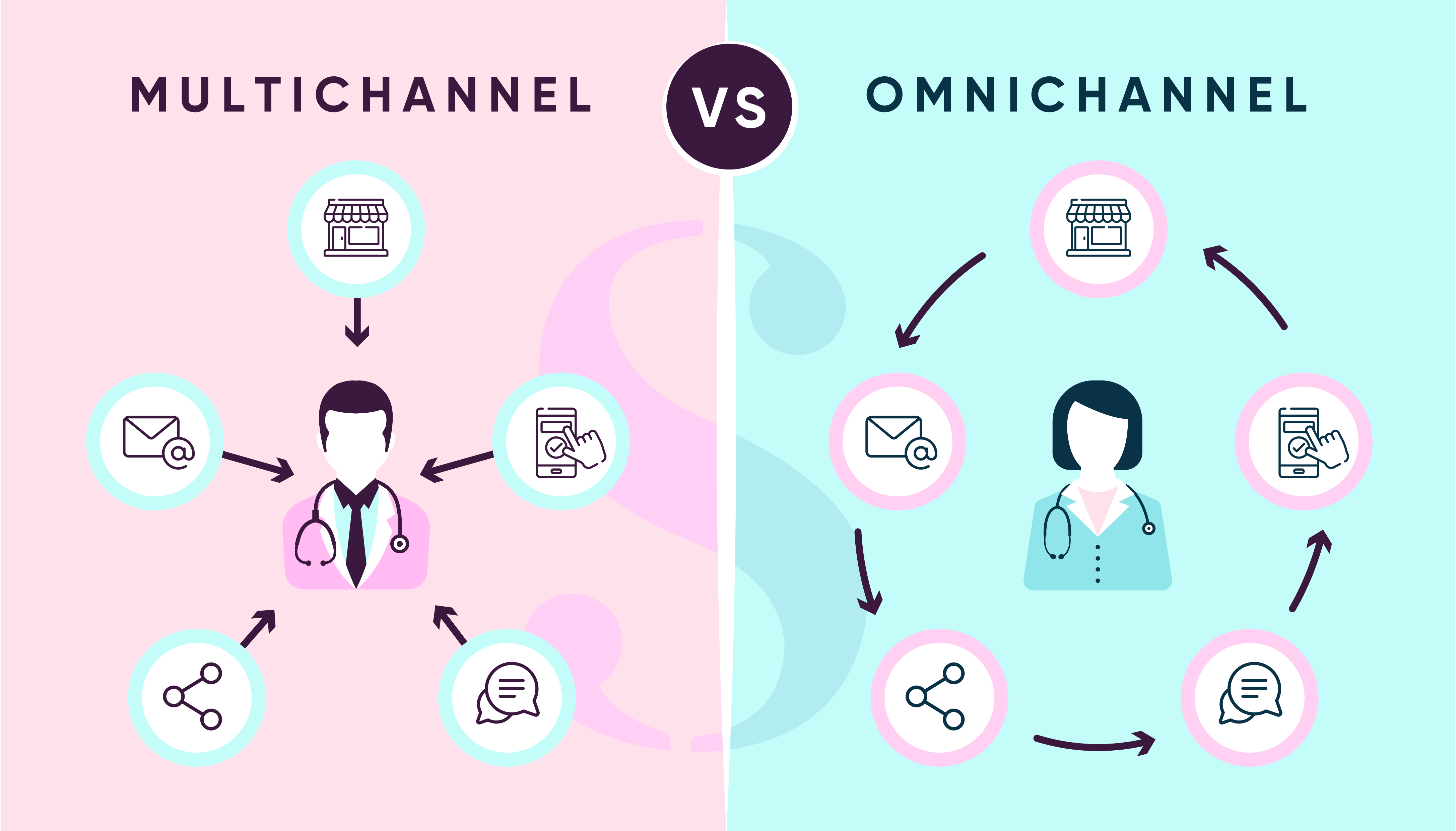In recent years, the terms ‘multichannel’ and ‘omnichannel’ have cropped up again and again in Pharma. And now ‘optichannel’ has been added to the mix. These buzzwords describe marketing strategies that enable you to communicate and engage HCPs – so what’s the difference and how do they influence marketing strategy?
Brand-focused vs HCP-focused marketing
Multichannel marketing revolves around your Brand. It’s designed to engage your customers across multiple channels (such as a website, a video, an advertisement, or an eBlast) by delivering the same message. The aim of the multichannel approach is to maximize reach and touchpoints to promote engagement – casting your net as wide as possible to catch the attention of more HCPs.
Omnichannel marketing puts your customers at the centre of your engagement strategy and is designed to ‘meet your customers where they are’. It uses more than one channel to communicate, but it takes an integrated approach. All content and messaging are designed to connect and work together so that content in one channel relates to content in another, providing a consistent customer experience across all touchpoints.
The aim of an omnichannel approach is to make the customer journey as seamless as possible, allowing them to move from channel to channel easily, without encountering the same information and providing them with information that they want, where they want it. Each experience provides real value and builds on the last, enabling HCPs to continue to develop their knowledge on a topic.
Optichannel marketing: ‘the next big thing’
To further enhance the customer experience and the effectiveness of the omnichannel strategy, you can gather customer data and insights to segment your audience, building different customer profiles. For example,
- Profile A – prefers video and email content
- Profile B – doesn’t engage with video, but likes live webinars and infographics
- Profile C – prefers videos, f2f meetings and remote detailing
With these profiles you can tailor content, building more relevant communications to optimize engagement – this is known as optichannel marketing.
Optichannel marketing focuses on real-time interactions with HCPs to provide the right information, at the right time, via the right channel. It uses data analytics and AI to interpret current HCP interactions and behaviours to then predict the best time and channel for engagement.
Optichannel marketing recognizes that each channel has unique strengths and limitations. Applying an optichannel approach allows companies to focus and tailor content to maximize the impact of a particular channel rather than engaging in a ‘war of the channels’. The result is a more personalized experience for the HCP and a more streamlined and efficient communication process compared with omnichannel marketing.
Implementing an omnichannel or optichannel marketing strategy
Providing a tailored communication approach for HCPs can be met with certain challenges. To ensure success, you need to be able to track a HCP’s interaction across various channels, and that’s a topic for another blog!
Whichever strategy you choose, consider creating a campaign that utilizes ‘modular content’. Modular content involves breaking your brand messages down into pre-approved blocks of content that contain all the information necessary to support a message (claims, references, graphics). Each module can then be assembled with other modules and repurposed across different channels and platforms to create tailored content, efficiently.
If you’re interested in multi-, omni-, or optichannel marketing, or if you want to work with a communications agency with experience in developing communication strategies using global modular content, get in touch.
Contact Alejandro.Potes@asandk.com today to find out how we can improve your brand’s reach.





